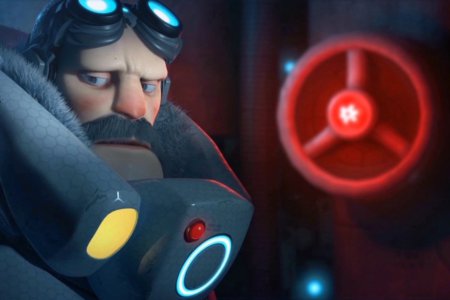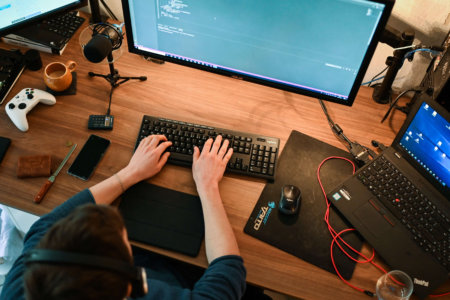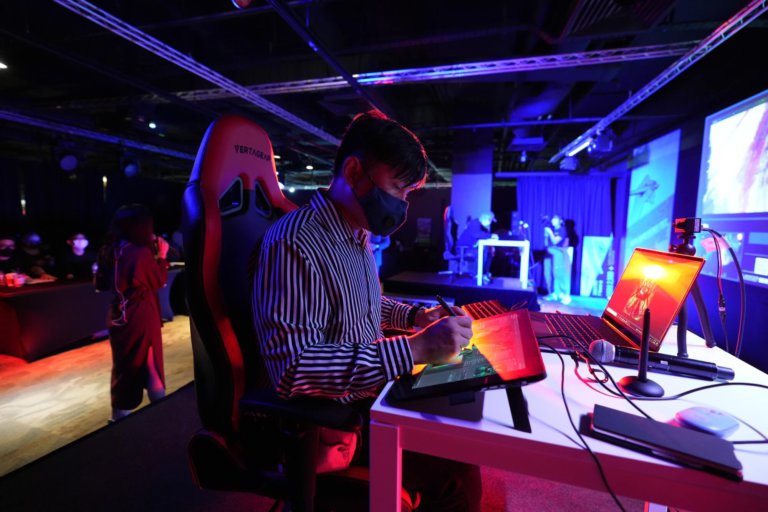
Are you one of the estimated three billion gamers across the globe? The gaming industry is a highly lucrative one. Mordor Intelligence reports that the gaming market was valued at 198.4 billion US dollars in 2021, and is expected to reach over US$339 billion by 2027.
There are many technical and creative options to turn your gaming passion into a career in the billion-dollar industry — just ask Aaron Lin, also known as InkShepherd. The Singaporean has been an avid gamer since the 1980s and is passionate about designing Fantasy Worlds.
He has turned his passion into a career, joining the gaming industry in Japan (Koei Tecmo) and Taiwan (Soft-world) from 2003 to 2015 as a game art director for Triple A MMORPGs (massively multiplayer online role-playing games).
His latest feather in his cap: being the first runner up at LIMITS Asian Championship Singapore – Singapore’s first NFT art battle. LIMITS aims to inspire and attract budding NFT artists, with the winner going to Japan for the finals.
Today, the former game art director is a virtual reality (VR) art lecturer at Nanyang Polytechnic. He notes that many factors affect a game’s success — chief among them: arts and visuals.
“Gameplay is something people discover after they begin playing, yet great visuals and graphics can attract even casual gamers to try out new games,” he tells Study International. “I personally believe that a game with poor aesthetics and visuals will substantially detract from the entire player experience.”
We speak to him to learn more about his interest in VR art, and traits an aspiring artist should have if they’re considering a career in the art and gaming industry.

Aaron Lin was the first runner up at LIMITS Asian Championships Singapore. Source: Aaron Lin
Hi Aaron. Can you tell us about yourself? How did your interest in VR art begin?
I was first exposed to VR through the Google VR Cardboard by a VR evangelist. Back then, I was very inspired by the VR experience and decided to start my own VR company.
Since then, my company has purchased a variety of VR headsets like Playstation VR and HTC Vive, which allowed me to explore all kinds of VR art. That’s how my journey in the VR metaverse began.
How did your education help you in your career?
I have always wanted to produce and create games since I was five years old, so I learned some programming before I joined Nanyang Polytechnic. I wanted to learn how to develop games and so I enrolled in that diploma.
I saw that my classmates were all really good at art and later realised that I need to step up my game which forced me to practice and constantly do art to improve myself in that area. Also, the school put us together to do different kinds of projects from claymation to animations which helped us understand that everyone has different strengths.
Eventually, we learnt to get along and made several award-winning projects. This has also inspired me to dive straight into the industry to do bigger projects and connect with people from the industry.
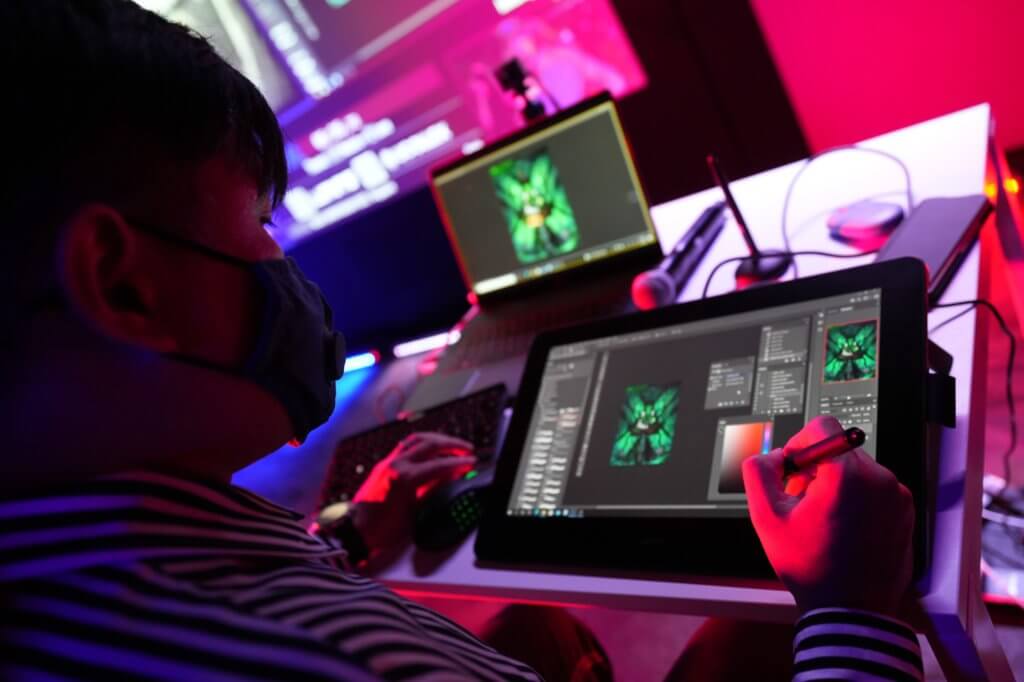
Source: InkShepherd
What does VR art entail? What about the potential career prospects for students in the gaming industry?
As for VR art and in the gaming world, I am looking forward to seeing how NFTs will be integrated with VR technology. NFTs can be used to own digital assets in virtual settings, such as games and virtual working spaces.
For example, in a virtual environment or game, an NFT can be used to store the ownership of an asset. Many VR worlds and experiences are still under development, but I am aware of a few virtual worlds where NFTs may be utilised to store assets like weapons in an MMORPG.
VR technology is more than just games, like how I indicated with virtual working places. Teams can cooperate and work on projects in virtual surroundings in a 3D environment where the projects they’re working on are displayed and represented.
These VR settings are also created by digital artists and are available for purchase as an NFT. VR can also be utilised to aid in the viewing of digital art, for example, a virtual museum where visitors can see different types of art pieces virtually.
Because of its accessibility and growing appeal among consumers, I believe traditional and digital art are being increasingly merged into the mixed reality environment. Therefore, students in the field should look into the metaverse with both AR (Augmented Reality) and VR mindset.
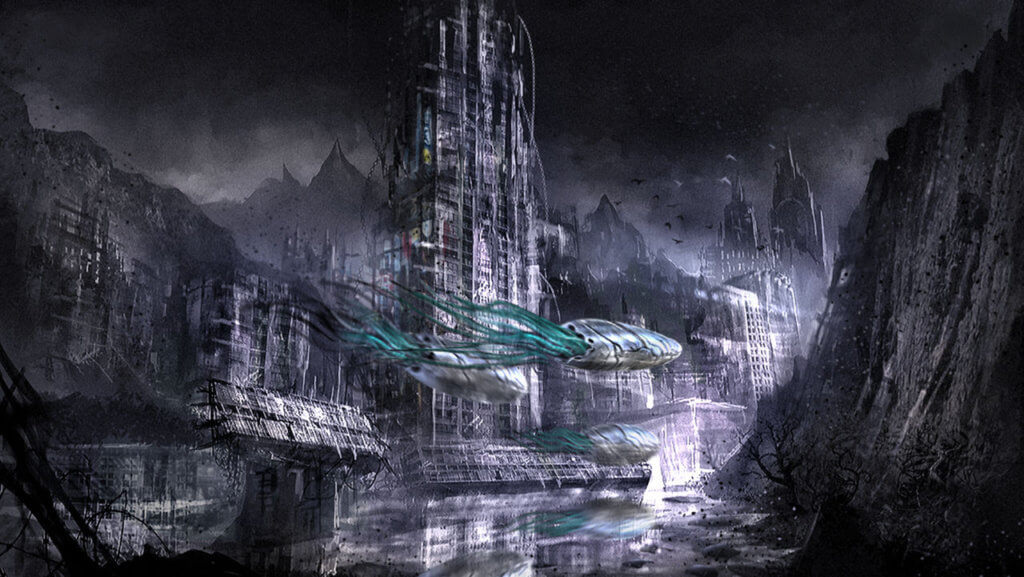
Game artists work hard to create visuals that are appealing and convey emotion to keep players engaged. Source: InkShepherd
What does a VR art lecture at Nanyang Polytechnic look like?
I usually will teach my students design thinking to create a prototype of the VR ideas. And later they will go into their final year and create VR projects for months and sometimes they work with real clients.
I always encourage them to make a prototype as fast as possible so they can test it early and prepare to make mistakes and learn from it. Because if they expect to make it a perfect project they can never learn from their mistakes.
From the prototype, they can always improve on it and make a better version. The students are exposed to all kinds of VR hardware as our school are constantly being updated with the latest technologies.

Lin’s home studio. Source: Aaron Lin
What are some of the important skills or traits should an aspiring artist have to join the gaming and art industry?
As technology is always improving and very disruptive, the heart of learning and always being ready for changes are important mindsets for an aspiring artist.
From pixel art, pre-rendered art to 3D and VR art, recently the NFT and metaverse space has been really disruptive in the industry.
Things are really moving really quickly and if you are not willing to change, the storms will take you away so you need to be always surfing with the waves to keep afloat.
You’ve had extensive experience in the gaming industry before lecturing at Nanyang Polytechnic. What are some of your proudest accomplishments in your career?
When I was the VR director for the Train to Busan VR tour show, I needed to design the VR experience which was the one I enjoyed most as the zombies became almost real in VR. They can even touch you and you feel them with the Haptic VR suit!

Source: InkShepherd
Shifting gears: are there any misconceptions about the gaming and art industry? If yes, what are they?
Many game creators make the mistake of thinking that graphics are superfluous extra work in their games. However, art and visuals are essential factors in determining a game’s success.
Gameplay is something people discover after they begin playing, yet great visuals and graphics can attract even casual gamers to try out new games. I personally believe that a game with poor aesthetics and visuals will substantially detract from the entire player experience.
Even in 2D games with minimal graphical elements, we artists will still work hard to produce visuals that are appealing and convey emotion to keep players engaged.
Lastly, what advice would you give to students aspiring to carve themselves a career in the art or gaming industry?
Continue to work hard and focus on your strength. Don’t be distracted by worldly things but focus on the heavenly things that give you creativity and wisdom!









